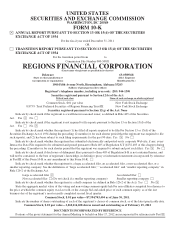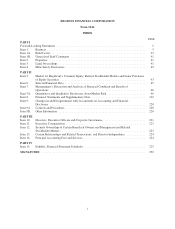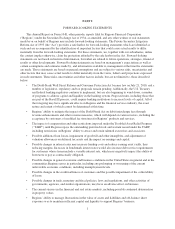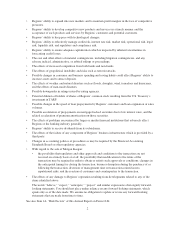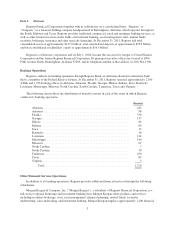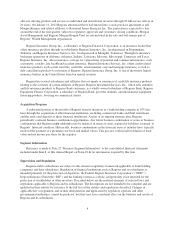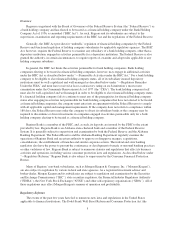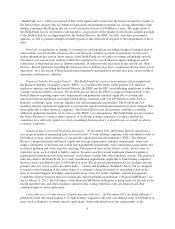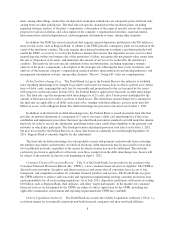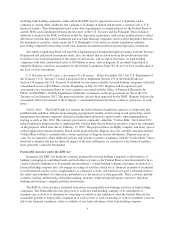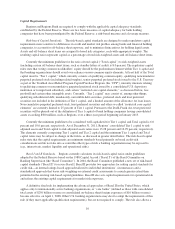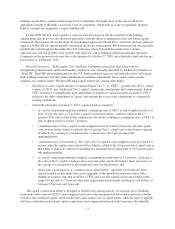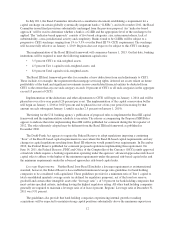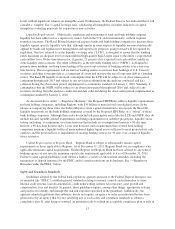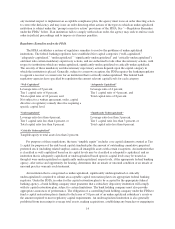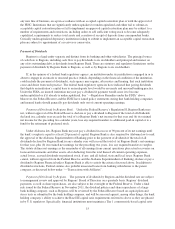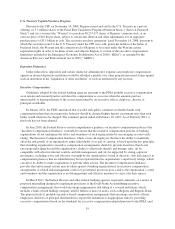Regions Bank 2011 Annual Report Download - page 33
Download and view the complete annual report
Please find page 33 of the 2011 Regions Bank annual report below. You can navigate through the pages in the report by either clicking on the pages listed below, or by using the keyword search tool below to find specific information within the annual report.including bank holding companies, under which the FDIC may be appointed receiver to liquidate such a
company if, among other conditions, the company is in danger of default and presents a systemic risk to U.S.
financial stability. This determination must come after supermajority recommendations by the Federal Reserve
and the FDIC and consultation between the Secretary of the U.S. Treasury and the President. This resolution
authority is similar to the FDIC resolution model for depository institutions, with certain modifications to reflect
differences between depository institutions and non-bank financial companies and to reduce disparities between
the treatment of creditors’ claims under the U.S. Bankruptcy Code and in an orderly liquidation authority
proceeding compared to those that would exist under the resolution model for insured depository institutions.
An Orderly Liquidation Fund will fund OLA liquidation proceedings through borrowings from the Treasury
Department and risk-based assessments made, first, on entities that received more in the resolution than they
would have received in liquidation to the extent of such excess, and second, if necessary, on bank holding
companies with total consolidated assets of $50 billion or more, such as Regions. If an orderly liquidation is
triggered, Regions could face assessments for the Orderly Liquidation Fund. We do not yet have an indication of
the level of such assessments.
U.S. Department of Treasury’s Assessment Fee Program. In late December 2011, the U.S. Department of
the Treasury (“U.S. Treasury”) issued a proposed rule to implement Section 155 of the Dodd-Frank Act.
Section 155 requires the U.S. Treasury to establish an assessment schedule for bank holding companies with total
consolidated assets of $50 billion or more. Beginning on July 20, 2012, Regions will be required to pay
assessments on a semiannual basis to cover expenses associated with the Office of Financial Research, the
FSOC, and the FDIC’s Orderly Liquidation Authorities. Comments on the proposed rule are due to the U.S.
Treasury in late February 2012. The proposed rule has already been approved by the FSOC. Regions believes the
assessment will not be material to the Company’s consolidated financial position, results of operations, or cash
flows.
Volcker Rule. The Dodd-Frank Act requires the federal financial regulatory agencies to adopt rules that
prohibit banks and their affiliates from engaging in proprietary trading and investing in and sponsoring certain
unregistered investment companies (defined as hedge funds and private equity funds), with implementation
starting as early as July 2012. The statutory provision is commonly called the “Volcker Rule”. In October 2011,
federal regulators proposed rules to implement the Volcker Rule that included an extensive request for comments
on the proposal, which were due by February 13, 2012. The proposed rules are highly complex, and many aspects
of their application remain uncertain. Based on the proposed rules, Regions does not currently anticipate that the
Volcker Rule will have a material effect on the operations of Regions and its subsidiaries. Regions may incur
costs if it is required to adopt additional policies and systems to ensure compliance with the Volcker Rule. Until a
final rule is adopted, the precise financial impact of the rule on Regions, its customers or the financial industry
more generally, cannot be determined.
Permissible Activities under the BHC Act
In general, the BHC Act limits the activities permissible for bank holding companies to the business of
banking, managing or controlling banks and such other activities as the Federal Reserve has determined to be so
closely related to banking as to be properly incident thereto. A bank holding company electing to be treated as a
financial holding company may also engage in a range of activities which are (i) financial in nature or incidental
to such financial activity or (ii) complementary to a financial activity and which do not pose a substantial risk to
the safety and soundness of a depository institution or to the financial system generally. These activities include
securities dealing, underwriting and market making, insurance underwriting and agency activities, merchant
banking and insurance company portfolio investments.
The BHC Act does not place territorial restrictions on permissible non-banking activities of bank holding
companies. The Federal Reserve has the power to order any bank holding company or its subsidiaries to
terminate any activity or to terminate its ownership or control of any subsidiary when the Federal Reserve has
reasonable grounds to believe that continuation of such activity or such ownership or control constitutes a serious
risk to the financial soundness, safety or stability of any bank subsidiary of the bank holding company.
9


